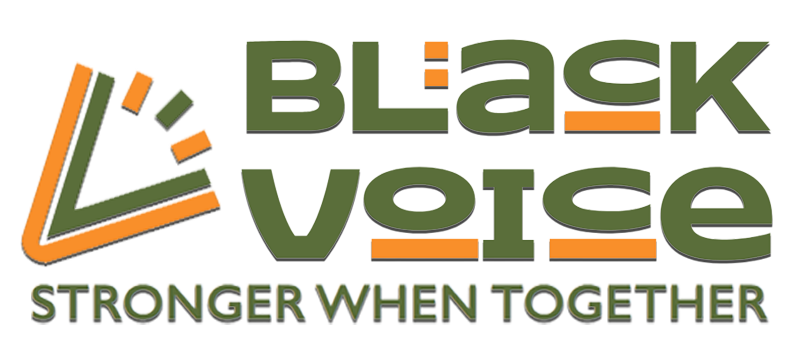By Yanet Mengistie
Posted on December 31, 2021

When someone is discriminated against, standing up to the perpetrator in the moment can be quite difficult. The discriminator can be an employer, housing authority, or government body. This puts the individual in an uncomfortable situation because pursuing a discrimination claim could lead to further retaliation at their place of work or residence. This can silence the person into internalizing their emotions and continuing to take the discriminatory treatment. It’s important to know your rights and what you can do when you’re being discriminated against so you can be empowered to take action if you ever find yourself in that position.
What is discrimination?
Discrimination is legally defined as “a distinction or difference in how a person is treated that has a negative impact on that person.” This treatment becomes discriminatory if it is based on protected grounds of Ontario’s Human Rights Code. A protected ground is someone’s age, race, ability, gender identity, sex and many other social or personal identifiers. This means that you have the right to take what you believe was a discriminatory act or actions to a legal authority or body as you are allowed to do so under the Code.
Human Rights Tribunal of Ontario
One of the places you can go to take your discrimination claim is the Human Rights Tribunal of Ontario (HRTO). The HRTO is one of 14 tribunals in Ontario that seek to uphold your rights; there are other tribunals for other legal issues such as the Animal Care Review Board, Child and Family Services Review Board and many others. The HRTO specifically pertains to discrimination or harassment issues that are violations of Ontario’s Human Rights Code. The tribunal seeks to address claims firstly through mediation. The goal of mediation is to create a process in which a settlement that resolves the application is created. Therefore, there is a mediator present along with both parties who uses an “active listening approach” in which they hear both sides and consider the desired results of both parties. The mediator does not make any decisions like a judge would but rather reviews the documents and guides both sides to an amicable and jointly accepted settlement. It’s important to note that before a mediation session, a confidentiality agreement must be signed. Afterward, if a settlement is reached both sides must complete a settlement form and the HRTO will provide a letter to confirm the settlement and the case file will be closed.
However, if the parties do not want to go the mediation route regarding the case then a hearing will be held. The first stage of the hearing is the summary hearing where the applicant will have to state what happened and their evidence. The adjudicator, who acts similarly to a judge, will decide whether the evidence provided is grounds to proceed or dismiss the case.
If the case goes forward, both parties will be able to present witnesses or evidence for their side and the adjudicator decides the result. If the adjudicator finds there to be discrimination or harassment they can issue remedies to the applicant. These could include: financial compensation, “non-monetary award” such as the company or employer having to issue mandatory anti-discrimination training, or possibly forcing the company or employer to create anti-discrimination policies in line with the Human Rights Code.
The final decision will be issued three to six months after your last hearing date, depending on the length of the hearing. The longer the hearing the longer the final decision takes. This process may aid those who are seeking a private resolution regarding what happened to them or, someone who is not prepared to have this legal process last longer than 6 months. As long judicial periods can be emotionally taxing for someone who has been harassed or discriminated against.
Canadian Human Rights Commission
Another entity that you can take your discrimination claim to is the Canadian Human Rights Commission (CHRC). This organization handles claims against federal sectors, so if you were discriminated against by these sectors you could file a claim to the CHRC. These include Airlines, television and radio and even telephone companies.
If filing with the CHRC you must file within 12 months of the discrimination occurring. You do not need a lawyer and it will not cost you a fee.
The first step is of course to make sure your claim would fall under the jurisdiction of the CHRC and then to file. The CHRC has a questionnaire you can take to give you an idea if you should file with them or another organization. You can find that questionnaire here. Once you have confirmed you are in the right place, you can file a complaint form online, phone or have it physically sent to you.
In the second step, you and the respondent (the person you filed the complaint against) will be offered mediation administered by the CHRC. This is voluntary and will be kept confidential. Mediation in this setting is allocated a four months time frame to give parties time to go back and forth. If the mediation process works, a settlement agreement will be signed by both sides that confirms what the settlement between the two parties is. If the mediation attempt fails, the case will be assigned a human rights officer.

This takes us to step 3 in which the officer will look through your claim to evaluate if you have evidence that can substantiate your claim. The officer may contact you to do this. They will use the information gathered to prepare an assessment report to send to the Commissioners. The Commissioners then will assess if your case should be:
- Dismissed
- Sent to conciliation (similar to mediation)
- Deferred and a request made for more information analysis
- Referred to the Canadian Human Rights Tribunal.
If sent to the Canadian Human Rights Tribunal there will be a similar process as the HRTO. In which there will be mediation, a settlement opportunity and if no settlement is reached a hearing will occur. Before the hearing, there will be what is called pre-hearing case management to let both parties file accurate documents and gather witnesses. Then the case will move to the hearing where a tribunal member will hear the details and evidence of the case. Then a decision will be announced. If they find there to be discrimination, a remedy will be ordered by the tribunal from the respondent to the person who filed. The decision process could take four months, but if the case is very intricate it could take longer. Overall, the CHRC may be a pathway to take for someone who is looking to hold larger government organizations accountable.
Human Rights Legal Support Centre (HRLSC)
The HRLSC is a legal aid organization that will help those who have been discriminated against. It is funded by the Government of Ontario for those who are going to file with the HRTO. Their headquarters is in Toronto but they have lawyers in Guelph, Hamilton, Ottawa, Windsor and London. The organization services are free to those who qualify while they work with you on a step-by-step basis. They will help you with the filing process, the mediation stage, possible settlement negotiations, or even if you end up heading to a hearing. The HRLSC is selective about what cases they take on because they have limited resources. Furthermore, depending on the complexity of the case the HRLSC can grant different levels of legal support services if the case is more straightforward. However, if you or someone you know faces barriers to representing themselves such as language, financial or immigration status then the HRLSC may be able to take on your case. You can contact them here.
Black Legal Action Centre
The Black Legal Action Centre (BLAC) fights for Black Canadians. Located at 720 Spadina Avenue, Suite 221 in Toronto, this not-for-profit corporation began in 2017 and provides legal services and help to those facing anti-Black racism. Their services are free as they aid low- to no-income Black Ontarians who do not have the financial resources to take on a legal battle. They take on a broad range of areas such as education, employment, housing and human rights issues. BLAC is well versed and prepared on the topic of discrimination. You can book an appointment in which BLAC will provide legal advice on the best route to take given your circumstances and claim, allocate representation if it is best for your case and even provide referrals to other legal organizations that can better assist your specific case. Although they do not assist with the Tribunals and Courts process, their broad range of expertise could aid if you find that your case is outside of the bounds of discrimination and may instead be an Employment Law, Housing Law, or Education Law issue. For instance, if you believe your child had received a suspension or exclusion from school and you believe it was because they were Black and want to revoke these charges, this may fall under Education Law as opposed to a discrimination claim. This means that you may have to take a different approach to seek justice which BLAC may be able to help you do. Overall, BLAC and its services would be best suited for a Black low-income Canadian seeking a wide range of legal issues. It is a good place to start if you have a legal battle ahead because even if this organization cannot help your specific case they will be ready to refer you to who can.
Being discriminated against is already painful enough, and having to see the person who targeted you in a workplace or housing unit could make things even more painful. The avenues listed within this article are ways for you to seek some form of justice to hold that person or authority responsible to some degree. This may not remove the hurt caused by the discrimination, but can perhaps offer some justice.
Yanet Mengistie is an experienced Writer, Researcher and Creative who is ready to hit the ground running with Black Voice. Driven by having previously worked as a Content Writer for a company that sought to uplift small businesses in Northern Canada, she takes joy in using her writing to uplift small or marginalized voices. As a Writer with Black Voice, her goal is to combine this passion for small businesses with this publication's mission of empowering Black individuals across Canada. Yanet is committed to ending the marginalization of Black Canadian perspectives and opinions. She hopes to bring Black excellence, concerns or hot topics to the forefront through her work with Black Voice.

